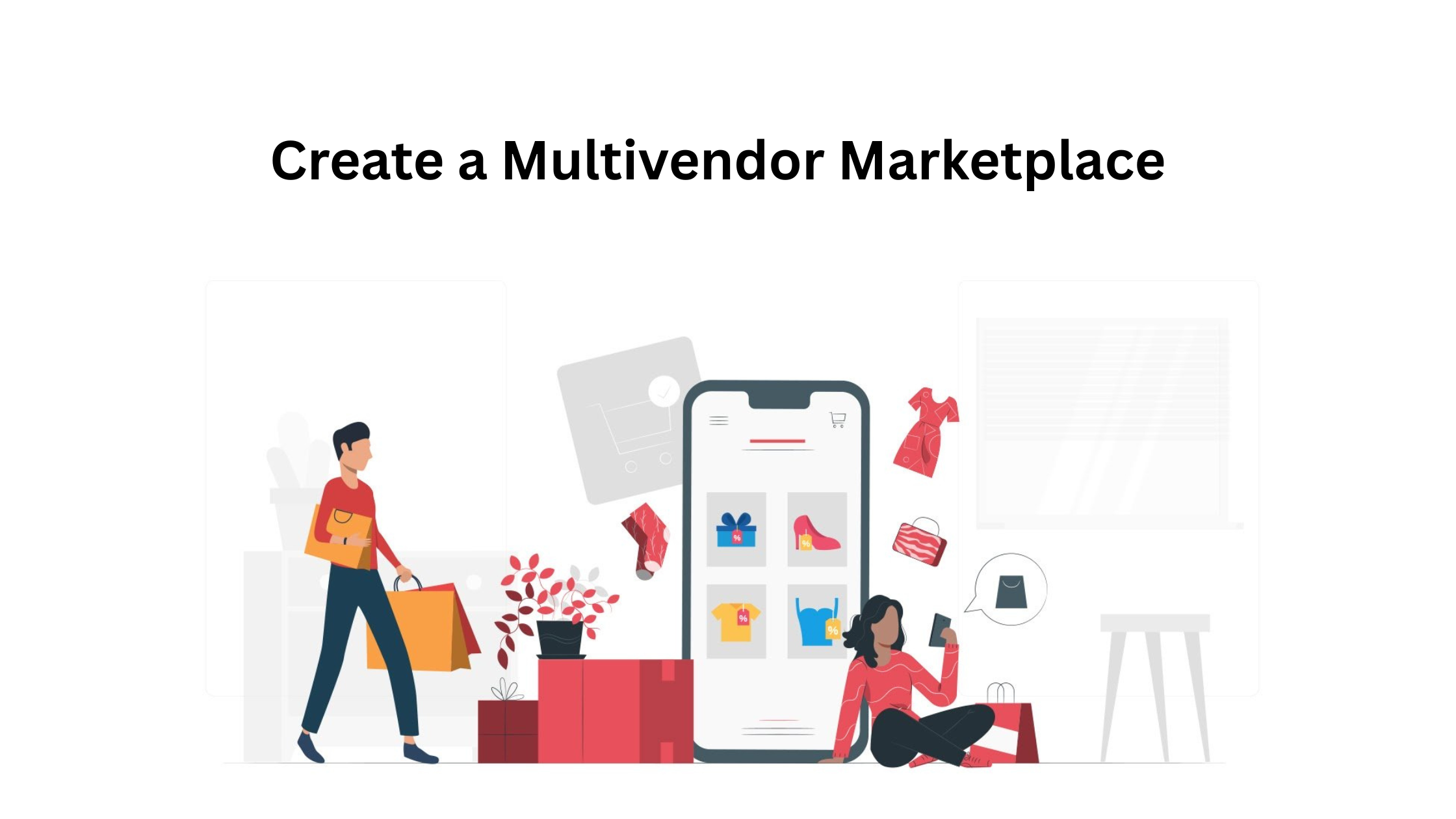Building an online store is one thing—building a multivendor marketplace is another. Platforms like Amazon, Etsy, and Daraz have redefined the way we buy and sell online. But many aspiring entrepreneurs shy away from creating such multivendor marketplaces, thinking it requires complex coding, months of development, and a hefty budget. The truth is, in 2025, you don’t need any of that.
Thanks to ready-made SaaS solutions, launching your own multivendor marketplace has never been easier or more affordable. Whether you want to create a niche product marketplace or a full-scale eCommerce platform, you can now do it all—without writing a single line of code.
What is a Multivendor Marketplace?
A multivendor marketplace is a type of eCommerce website where multiple sellers or vendors can register, list their products, and sell to customers under a unified storefront. As the marketplace owner, you manage the platform, control branding, and earn income through commissions, subscription plans, or other monetization methods. What makes this model powerful is that you don’t need to manage inventory or handle delivery logistics yourself—the vendors take care of that.

Real-life examples of multivendor marketplaces include Amazon, which covers almost every product category, Etsy, known for handmade and creative goods, and Daraz, one of the largest eCommerce platforms in South Asia. These platforms demonstrate the power of the multivendor model: they scale fast, offer diverse products, and generate revenue passively.
Why Entrepreneurs Choose the Multivendor Marketplace Model
The multivendor approach is becoming increasingly popular among new business owners because it minimizes risk while maximizing scalability. You don’t need to invest in stock or warehousing. Instead, you create the environment where other businesses sell. Your income grows as more vendors join and as customers make purchases across different shops.
It also offers flexibility. You can start small with a niche—such as a multivendor marketplace for local food delivery or digital downloads—and scale up as demand increases. With the right platform, the complexity of vendor management, payment processing, and customer handling becomes automated and effortless.
The Problem with Building Multivendor Marketplace from Scratch
While the multivendor model is attractive, building a multivendor marketplace from the ground up can be overwhelming. Hiring developers, managing databases, securing payment gateways, and maintaining the site are just a few of the challenges. Many startups spend months (and thousands of dollars) building their first version, only to realize that the real challenge lies in scaling and managing the platform over time.
That’s why SaaS (Software as a Service) multivendor marketplace solutions are game-changers. Instead of starting from zero, you get a platform that’s already built, tested, and optimized for multivendor commerce. All you have to do is sign up, customize your settings, invite vendors, and launch.
Why a Ready SaaS Solution is the Best Choice in 2025
A ready eCommerce SaaS multivendor marketplace solution eliminates nearly all the technical and financial barriers. You don’t need developers, hosting knowledge, or time-consuming maintenance. These platforms provide everything from vendor onboarding to payment integration out of the box.
What makes SaaS solutions especially appealing is the speed. You can launch a fully functional multivendor marketplace in as little as 48 hours. They’re also cost-effective—most come with a fixed monthly or yearly plan, making budgeting much easier for startups.
Must-Have Features in a Multivendor SaaS Platform
If you’re serious about creating a smooth and professional multivendor experience, look for these essential features in your SaaS platform:
- A dedicated vendor dashboard for managing orders, products, and earnings
- Flexible commission settings for different vendors or product types
- Seamless product management and bulk uploads
- Integrated order tracking and shipping status updates
- Secure and automated payout system for vendors
- Mobile responsiveness for both vendors and buyers
- SEO tools, analytics, and marketing integrations to drive traffic
A robust multivendor SaaS platform will also offer real-time reporting, customer support tools, and the ability to scale as your marketplace grows.
How to Create a Multivendor Marketplace Step by Step
The first step in building your marketplace is choosing a niche. This helps you focus your marketing efforts and attract the right kind of vendors and buyers. For example, you might build a marketplace around fashion, electronics, handmade goods, services, or even groceries.
Once your niche is defined, you need to sign up for a multivendor SaaS platform that fits your goals. After registration, you can set your store name, branding, categories, and vendor rules. Most platforms will allow you to customize your domain name and homepage layout.
Then comes vendor onboarding. Share your marketplace with local businesses, online sellers, or small manufacturers who would benefit from selling in a shared space. You can approve their registrations, help them list products, and train them to manage orders and respond to customers.
Once everything is set up, test the site by placing a few sample orders, checking how commissions and vendor payouts work, and making sure everything looks good on mobile. After that, it’s time to launch.
Ways to Monetize a Multivendor Marketplace
There are several ways to generate consistent income from your platform. The most common method is charging a commission on each sale. You can also offer subscription plans to vendors that include premium features or promotional opportunities.
Some marketplace owners earn from featured listings—where vendors pay extra to appear on the homepage or top of a category. Others monetize through advertisements, selling space to brands that want visibility on your platform.
How to Attract and Onboard Vendors
Vendors are the lifeblood of your multivendor marketplace. To bring them in, start by targeting small businesses that lack their own eCommerce infrastructure. Offer them an easy way to sell online, with zero tech setup. You can promote your platform via social media, direct outreach, or Facebook Ads targeting people interested in “selling products online.”
Make vendor onboarding easy by offering video guides, walkthroughs, or even a personal support call during their first setup. Early success stories from vendors will bring in more sellers through word of mouth.
Final Thoughts: Multivendor Marketplaces are the Future
If you’ve ever thought about starting your own eCommerce business, a multivendor marketplace offers one of the best models for long-term growth. You don’t have to worry about inventory, logistics, or tech headaches—just focus on creating a great platform and supporting your vendors.
Thanks to modern SaaS technology, launching a multivendor marketplace in 2025 is not just possible—it’s fast, affordable, and profitable.
Ready to Launch Yours?
If you’re looking for the simplest way to get started, our ready eCommerce SaaS multivendor marketplace solution has everything you need. Launch your marketplace in under 48 hours, onboard vendors instantly, and start earning from day one.
👉 Try the Free Demo Now. Let’s turn your marketplace idea into a business reality—no coding required.
Frequently Asked Questions
What is a multivendor marketplace?
A multivendor marketplace is an eCommerce platform where multiple sellers can register, list products, and sell to customers under a single storefront. The marketplace owner manages the platform and earns through commissions, subscriptions, or other monetization strategies.
Do I need to know coding to create a multivendor marketplace?
No. Thanks to modern SaaS solutions, you can create and manage a fully functional multivendor marketplace without writing a single line of code.
How much does it cost to launch a multivendor marketplace?
Costs vary depending on the SaaS platform you choose. Many solutions offer monthly or yearly subscription plans starting from as low as $20/month, making it affordable even for small startups.
How do I earn money from a multivendor marketplace?
You can monetize your platform by charging vendors a commission on each sale, offering premium vendor subscriptions, promoting featured listings, or running banner ads.
How can I find vendors for my marketplace?
Start by reaching out to small businesses, artisans, or online sellers who don’t have their own website. Use social media, online communities, and local networking to attract and onboard vendors.
How quickly can I launch my multivendor marketplace?
With a ready-made SaaS solution, you can launch your marketplace in less than 48 hours, including branding setup, category creation, and vendor onboarding.
Is it possible to scale a multivendor marketplace later?
Absolutely. SaaS platforms are designed to scale. You can start with a niche and expand to more categories or regions as your vendor and customer base grows.









